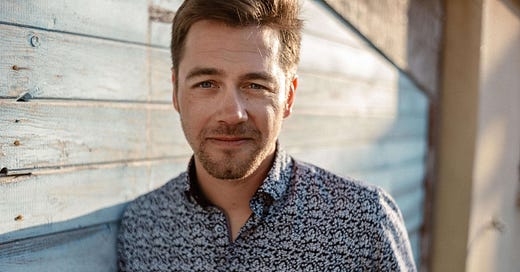What Chr. Hansen is doing with 40,000 Microbes
Chr. Hansen is unleashing the power of good bacteria to feed more people, reduce food waste, improve plant, and human health. We discuss their innovation strategy and how they work with startups.
Chr. Hansen has a library of more than 40,000 microbes. They’re one of the those companies with huge reach in the food and agriculture industry, but few might know their name. For over 145 years, the company has supplied bacteria and enzymes for dairy products, fermentation, plant health and more. They’ve done much to look at how microbes can improve health, reduce waste, and the limit antibiotics and pesticides.
In this episode, I speak with Julien Biolley, the Head of Marketing and Business Development for Chr. Hansen North America’s Food Cultures & Enzymes team. Listen in on how the company is approaching innovation, sustainability, and partnering with different stakeholders from startups to universities to unleash the power of good bacteria.
Related Links
💼 More interviews with Nordic Food & Bev companies
🟥 Chromologic’s on producing natural colors with fermentation
🥛 Oatly’s Founder on how it took 20 years to find success
🍔 How to successfully launch new plant-based products
🦠 How microbes are fueling the Greenlandic Diet Revolutions
🐄 Arla is using blockchain to track their milk
Episode Transcript
Analisa Winther, Nordic FoodTech Podcast Host 1:28
I would love to start by just understanding a little bit about where you work, Chr. Hansen, and what your role at the company is. So, can you give us some background information on the company itself and then what you do?
Julien Biolley, Chr. Hansen 1:41
Yeah, sure. Well, I work for a company named Chr. Hansen I am actually heading the Marketing and Business Development team in North America. But this company is Danish company and it’s a pretty old company. We've been around for about 145 years now, and the headquarters is based in Copenhagen. So, what we do is basically bioscience. We started long ago working with enzymes back in the 19th century. But over time, all of our portfolio and technology has evolved. And now what we work with is mainly bacteria and enzymes to supply different types of industry. And through that work, we are pretty happy to see that these technologies are extremely relevant in today's world. And we are trying to have our customers and partners benefit as much as we can through these technologies. In terms of what I do, I'm basically working with my team. Here in North America, what we try to strive for is empowering people as much as we can to live by what we do at Chr. Hansen. We have a lot of people with a lot of passion for microbes. So, we try to have these people basically working together with customers and partners to really get the value out of these tiny bacteria. And we try to push as much as we can, our agenda, which is basically unleashing the power of these bacteria to do good for the world.
Analisa Winther, Nordic FoodTech Podcast Host 3:12
When you talk about getting the value out of bacteria, what does that mean? What does that look like for someone that's not in that domain?



